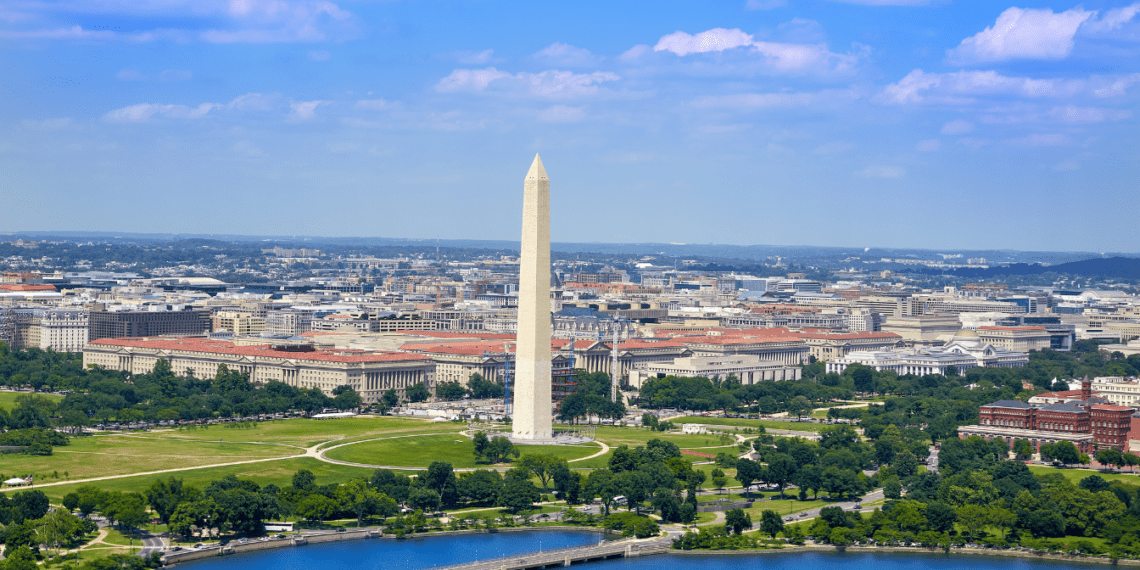Washington D.C. is the hub of American history. It’s filled with special landmarks. These landmarks give us a unique look at the U.S.’s past. The White House and the U.S. Capitol stand out as top attractions. They draw in both history lovers and curious visitors.
So, what are the most interesting spots in this busy city? And how can you enjoy them the most? Come along as we explore Washington D.C.’s top historical sites. We’ll learn the stories that make these places famous.
Key Takeaways
- Washington D.C. is packed with historical sites, from grand buildings to meaningful memorials.
- It’s a rich mix of culture and history. It shows the deep story of America.
- The White House, Capitol, and Smithsonian museums are key spots to see.
- Don’t miss the National Mall for a big part of U.S. history and its legacy.
- The city’s landmarks include themes like rights for disabled people. And the movement for civil rights.
- And work on city life and its growth.
What’s the most surprising treasure in Washington D.C.? Let’s go further and find out. Discover the amazing history and culture of this famous American city with me.
Exploring the Nation's Capital: A Journey Through Historic Sites
Washington D.C. is rich in history. Its landmarks share insights into America’s past. From the majestic National Mall to Georgetown’s serene charm, this city invites you to explore. Dive into the stories and monuments that define the United States.
There are 46 historic sites in downtown Washington according to the DC Preservation League. The Capitol Hill Historic District stands out—it has 8,000 buildings. This is twice as many as Georgetown.
Interested in African American history? The DC Historic Preservation Office offers a African American Civil Rights tour with 109 stops. Also, the National Historic Landmarks in Lafayette Square & 16th Street has 13 significant places.
Yet, there’s a gap in preserving African American historical sites in D.C. Only 2% of National Historic Places focus on this in 2020. Progress has been made, with 10 sites recognized by the DC Preservation League in 2021.
Besides historical sites, D.C. features iconic monuments. The National Mall is home to the Jefferson Memorial and more. These structures are key to America’s identity.
Arlington, Virginia contains important historical locations. This includes Arlington National Cemetery and the National 9/11 Pentagon Memorial.
Housing 19 museums and more, the Smithsonian Institution tells America’s story. This institution was founded in 1846. It invites everyone to learn about the U.S.’s history.
Washington D.C.’s history is everywhere. From the National Mall to its neighborhoods, the city’s past is vibrant. Whether you’re new or old to D.C., its historical sites offer a captivating journey.
The White House is majestic, serving as the President’s home and workplace. It stands for over two centuries, marking key moments in American history. Its history and meaning make it an iconic structure.
Significance and History
The White House was started in 1792 and finished in 1800. It was designed with Neoclassical style, showing beauty and power. Despite changes, its elegance and role stay the same.
Today it has 132 rooms, 35 bathrooms, and much more. For fun, there’s a tennis court and movie theater. These features help the President and guests enjoy their time there.
Visiting the White House
Guided tours let people see inside the White House. They start at the Visitor Entrance Building, where you learn about its importance. The guide explains the beautiful gardens outside.
Inside, visitors see famous rooms like the Blue Room and the State Dining Room. These rooms host important events and guests. The house also has many art pieces, like paintings of past presidents.
Visiting the White House is a special chance to see American leadership up close. It’s a memorable visit to a place that’s vital in U.S. history.
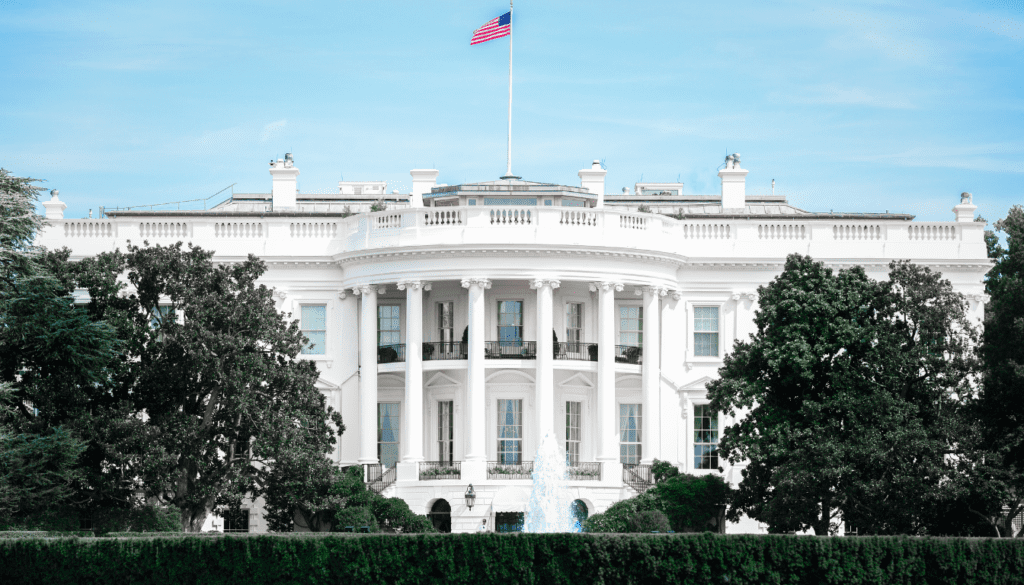
The United States Capitol: A Magnificent Architectural Marvel
The United States Capitol is an amazing building that hosts the U.S. Congress meetings. Its unique dome and grand design reflect the country’s commitment to democracy for more than 200 years. By taking a tour, visitors can learn about the Capitol’s history and its design from the inside out. These tours show how the building plays a key role in the country’s laws and the big events it has witnessed.
The Capitol's Design and History
The construction of the Capitol started in 1793 and was done by 1800. It was planned by architect William Thornton to stand out with a dome that reaches 289 feet high. As more people worked there, the building saw changes over time, including the addition of its famous dome in the 1850s.
Inside, the Capitol is full of amazing artwork like murals and statues. The Rotunda is a stunning circular space under the dome with paintings and sculptures that hold great historical value. The art in the Capitol tells the story of America and the people who have influenced its history.
Guided Tours and Visitor Information
Taking a guided tour is a great way to learn about the United States Capitol. Tours are available every day and let visitors see the Rotunda and other important places. They also inform about the building’s governance role and the significant happenings inside its walls.
The Capitol Visitor Center is another fantastic place to learn about this historic site. It offers interactive displays and educational activities that explore the Capitol’s past and its importance as a beacon of American democracy.
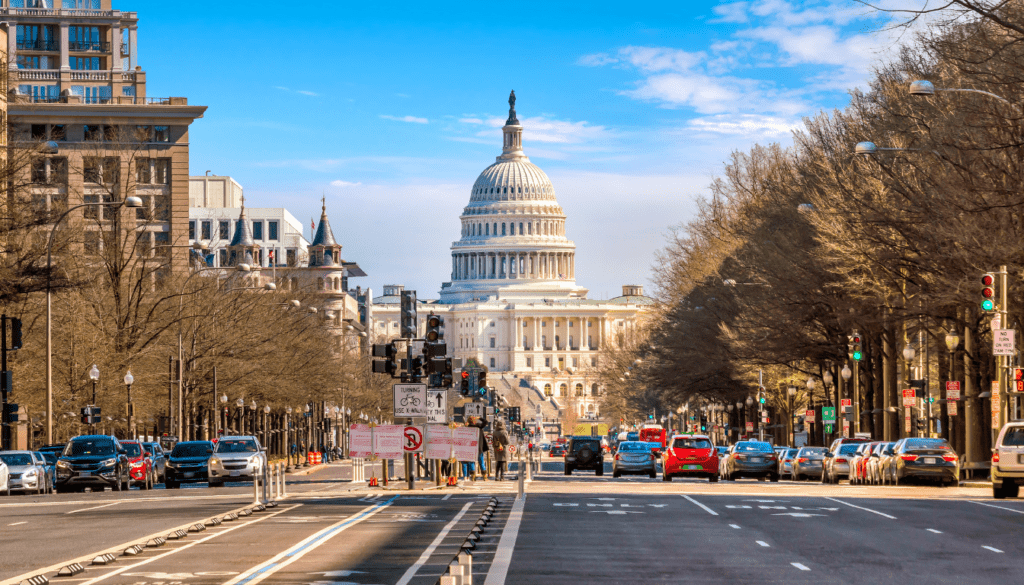
“The United States Capitol is not just a building, but a living, breathing symbol of the American democratic system. Its rich history and architectural grandeur make it a must-visit destination for anyone exploring the nation’s capital.”
The National Mall in Washington D.C. is a giant, green area. It holds some of America’s top monuments and memorials. Around 36 million people visit each year, making it the most visited National Park. It lets visitors deeply feel connected with America’s past through its history and heritage.
The Lincoln Memorial is a giant tribute to America’s 16th president. It was designed by Henry Bacon. The main feature is a 19-foot seated Lincoln.
Lincoln looks over the reflecting pool and Washington Monument. Each of the 58 steps symbolizes a year of his life. It’s a place to think about Lincoln’s legacy of unity and freedom.
The Vietnam Veterans Memorial is a quiet but moving place. it honors those who served in the Vietnam War.
Maya Lin designed it with black granite walls engraved with names. Over 58,000 American soldiers who died or went missing are listed. Many leave personal items like letters at the wall.
The Martin Luther King Jr. Memorial is by the Tidal Basin. It honors the civil rights hero.
The design reflects King’s “I Have a Dream” speech. It shows a 30-foot King statue. Visitors pass through a “Mountain of Despair” to see the hopeful “Stone of Hope.” Here, King’s fight for fairness is remembered.
These monuments let visitors honor America’s heroes and consider its history. They inspire with the country’s principles, guiding its past, present, and future.
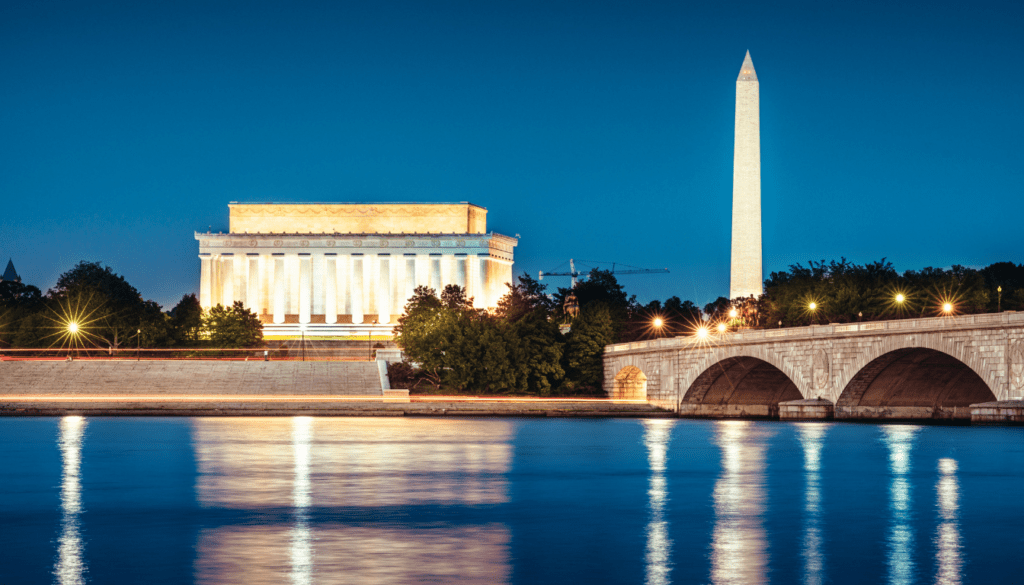
historical landmarks in Washington D.C.
Even though the National Mall’s monuments and museums are popular, Washington D.C. has many other places worth visiting. It’s full of lesser-known historical sites that show the city’s deep history. These off-the-beaten-path places help us understand how the country was shaped.
The Heurich House is one of these hidden gems. It’s a Victorian-era mansion where a German immigrant, Christian Heurich, used to live. Now a museum, it lets visitors see how the wealthy lived in the early 1900s. The house’s design is impressive, and you can learn about the Heurich family’s impact on D.C.’s history.
The Old Stone House in Georgetown is also a must-see. It’s from 1765, which is older than Washington D.C. itself. Inside, it feels like you’re in 18th-century America. This building is a direct link to the city’s colonial past.
Washington D.C. has many more historic sites waiting to be explored. The International Spy Museum and the Frederick Douglass National Historic Site are just a couple of examples. These spots tell stories that are essential to understanding our nation’s history.
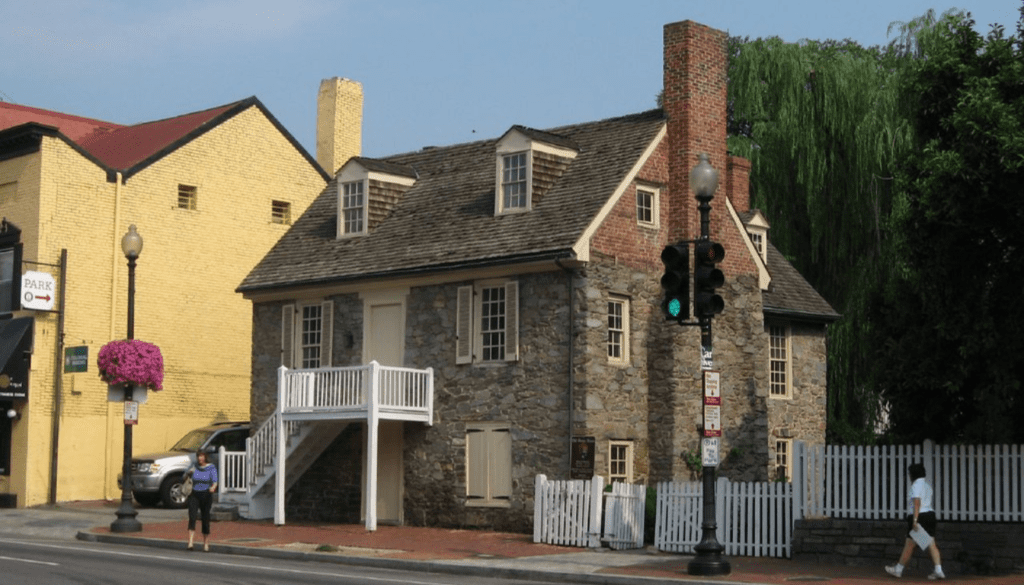
For those interested in history or just looking to explore beyond the National Mall, Washington D.C. has a lot to offer. Its historic sites and hidden gems will surely fascinate and educate you. So, step off the main path and discover the real essence of the nation’s capital.
The Smithsonian Institution: A World-Class Museum Complex
If you’re heading to Washington, D.C., don’t miss out on the Smithsonian Institution. It’s a network of museums and centers like no other. People get to see 17 museums, galleries, and even a zoo. They hold over 150 million treasures for everyone to enjoy.
The National Air and Space Museum
The National Air and Space Museum is a top highlight. It tells the story of flying and space missions. You can see the first aircrafts to the wonders of space travel. It’s a thrilling walk through history.
Another great spot is the American History Museum. It dives deep into America’s story. You learn about everything from the civil rights struggle to how our food has evolved. It’s the heart of our nation’s cultural journey.
Entry to the Smithsonian is always free. This means everyone, no matter their budget, can enjoy. It’s a place that opens its doors wide to the world, welcoming all.
The museums at the Smithsonian are perfect for anyone curious about flight, space, or American life. They offer an unbeatable learning chance. With their vast collections and no-cost entry, they’re a key stop in Washington D.C..
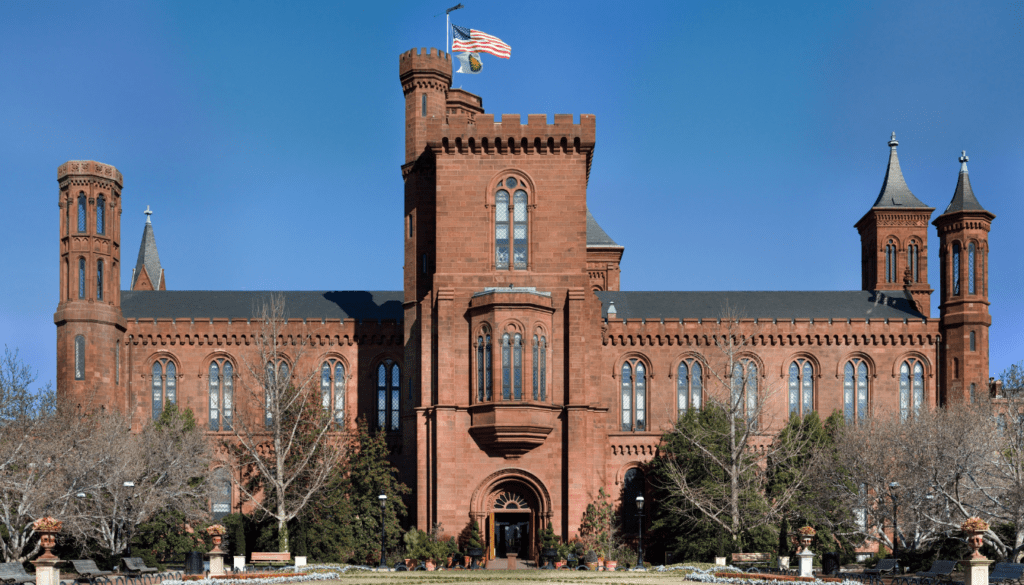
“The Smithsonian Institution is a treasure trove of American history and culture, offering visitors a chance to explore the remarkable achievements and diverse stories that have shaped our nation.” – Smithsonian Curator
In Washington D.C., the Library of Congress is a symbol of America’s rich literary history and stunning architecture. It was founded in 1800 and is the world’s largest library. It holds over 170 million pieces, ranging from books to maps.
The Thomas Jefferson Building, part of the Library, is a masterpiece of design. It contains 15 types of marble and 400,000 cubic feet of granite. Named a National Historic Landmark in 1965, this building is a treasure for its design.
The Library has a unique collection – Thomas Jefferson’s personal library. After it was burned in the War of 1812, Jefferson’s collection was sold to the Library. Although parts of it were lost in a fire in 1851, efforts are being made to reconstruct it, giving us insight into Jefferson’s mind.
Besides its beauty and rare books, the Library of Congress is alive with cultural and educational events. You can see various exhibits, take guided tours, and eat on the sixth floor. It’s a great place to learn about American history and culture.
If you love books or design, or if you’re just curious about American history, you have to visit. The Library of Congress is more than a building; it is a celebration of knowledge and the human story. It welcomes all to learn, explore, and find inspiration.

“The Library of Congress is not just a library, it is a temple of knowledge that houses the treasures of our nation’s history and culture.”
Washington D.C. is more than its monuments. It’s home to Georgetown, a historic gem. Visitors can experience its architectural past through well-preserved sites.
Old Stone House
The Old Stone House is a symbol of D.C.’s colonial times. It stands as the city’s oldest building since 1766. Here, you can truly feel the city’s rich history.
Tudor Place Historic House and Garden
The Tudor Place Historic House and Garden is a must-visit. This 19th-century manor, once the Washington family’s home, dazzles. It offers a look into the past with its grand interiors and lush gardens.
Georgetown has grown during the pandemic. It now boasts over 25 outdoor dining spots. Beyond food, the area has running clubs and beauty services. It’s buzzing with activity, welcoming all.
Georgetown is at the heart of D.C.’s culture and history. Its streets, landmarks, and events draw in visitors. For a rich experience, make sure to include Georgetown neighborhood in D.C. and the historic houses in Washington in your visit plans.
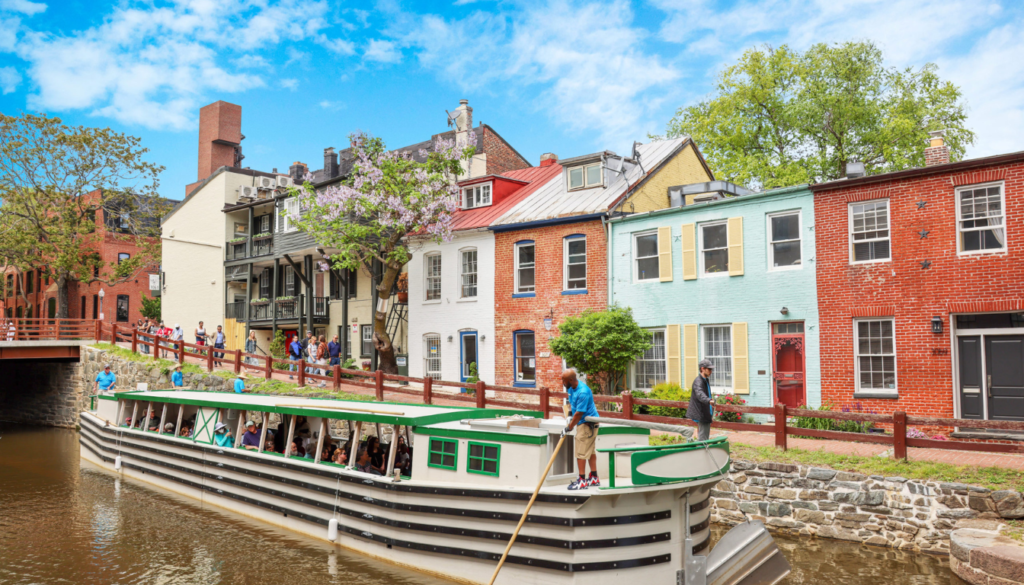
“Georgetown is a charming and historic neighborhood that offers a glimpse into the past while embracing the present. From the Old Stone House to the Tudor Place Historic House and Garden, there’s so much to discover and explore.”
In Washington D.C., the National Cathedral symbolizes the city’s deep religious roots and stunning architecture. It ranks as the sixth-largest worldwide and, second in the U.S. Its Gothic style has wowed people for many years.
Building the cathedral took a long time, 83 years from 1907 to 1990. It combines artesian marble with granite from Maine, showing exceptional craft. This architectural treasure is a dream for photographers who love detailed design and history.
Unlike old churches in Europe, the National Cathedral is open for everyone to see from the inside. This invites people to connect with the spiritual heart of the capital. It’s a place where community and faith come together.
The cathedral’s story dates back to when George Washington imagined D.C. in 1791, hinting at its future. A charter from Congress later recognized its importance, marking it as a key landmark. This solidified the cathedral’s place as a vital part of the nation’s capital.
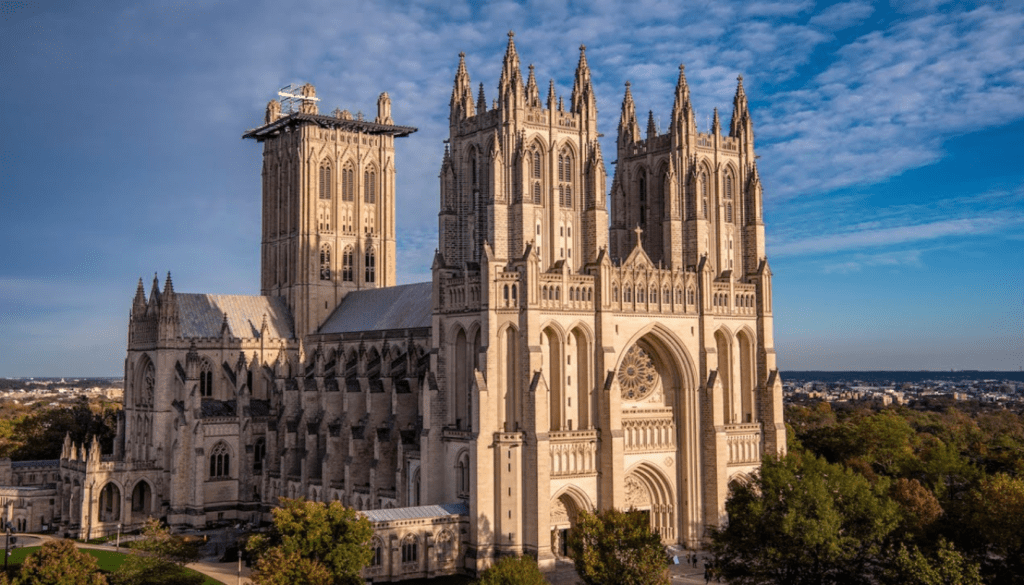
- 231 stained-glass windows honor key figures and achievements
- 288 angel statues grace the interior
- A Great Organ features 10,650 pipes
- 112 gargoyles, including a surprise – a Darth Vader sculpture
- $65 million in private funds were crucial for its completion
- It can host up to 3,500 people for various events and services
Although it needed repairs from an earthquake in 2011, the National Cathedral stands strong. It remains a symbol of the nation’s spirituality and architectural beauty. Every step inside is a journey through time, showing deep significance and beauty.
Arlington National Cemetery is across the Potomac River from Washington, D.C. It’s a special place that honors the courageous people who’ve served in the U.S. military. It covers more than 624 acres and is the final resting place for many American service members, starting from 1864.
The Tomb of the Unknown Soldier is at the heart of the cemetery. This site honors those whose names we don’t know. Soldiers from the 3rd US Infantry Regiment guard it all the time. They do the changing of the guard ceremony every hour. This ritual is at the heart of Memorial Day.
Sgt. Edward F. Younger chose the World War I Unknown Soldier in 1921. Before his burial, thousands came to pay respect, leaving many flowers. In 2021, a new tradition started – Flowers of Remembrance Day at Arlington.
At Arlington, you can also see the Arlington House. It was the home of Robert E. Lee, a Confederate General. It’s a beautiful house that overlooks the capital and reminds us of America’s history.
Arlington National Cemetery is filled with history and honor. It’s a testament to the bravery of those who served. It’s a respected site in D.C. where people from all over come to honor America’s heroes.
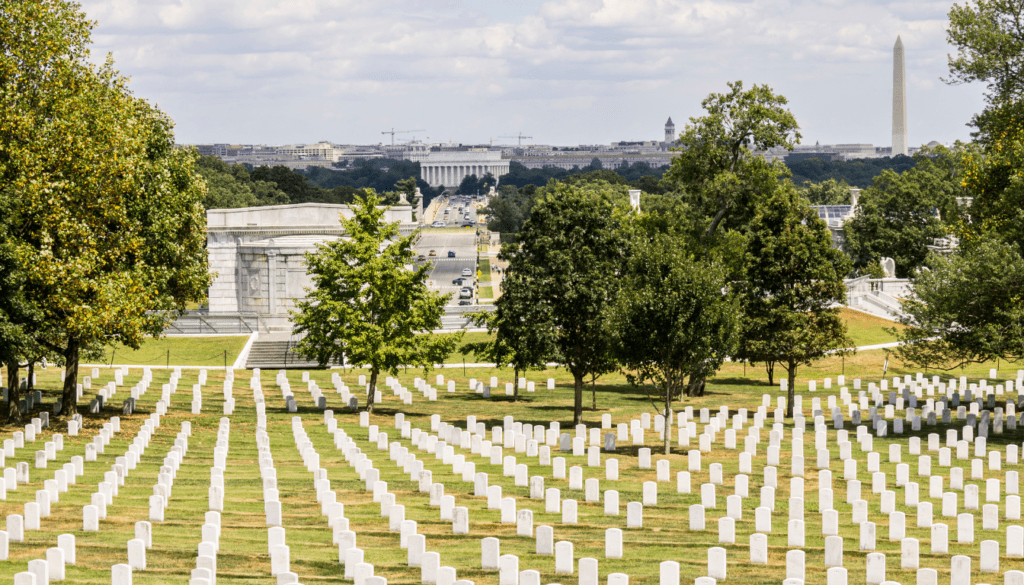
“The Tomb of the Unknown Soldier is a powerful symbol of the ultimate sacrifice made by our nation’s heroes. Visiting this sacred site is a humbling and profound experience that reminds us of the heavy price of freedom.”
Close to the mighty United States Capitol sits the Supreme Court of the United States. Since 1935, it has been the heart of the nation’s top court. This neoclassical building interprets and protects the Constitution.
This court is a key player in how laws are understood and affects all Americans. It opens its doors to visitors in Washington D.C. to learn about justice.
Exploring the Supreme Court's Judicial Landmarks
Many big decisions have happened at the Supreme Court, changing America. For example, the Dred Scott v. Sandford case didn’t consider Africans as citizens. Also, the Brown v. Board of Education case made separate schools for black and white students illegal, deciding that all children in America had to go to school together.
Many other cases have dealt with issues like fairness and people’s rights. For instance, the Plessy v. Ferguson case found that separate places for blacks and whites were okay. But, later, the Loving v. Virginia case said it was wrong to stop people from different races marrying. The court keeps working to make sure everyone is treated right.
Engaging with the Supreme Court's Legacy
When you visit, you get to see the Supreme Court’s history up close. They offer things like tours, lessons, and news on talks and activities. It’s a great chance to learn more.
Taking part in a pretend Supreme Court case is very eye-opening. You get to understand how the court makes choices. People act as judges, lawyers, and those involved in the case, talking about the laws’ details.
| Supreme Court Landmark Decisions | Year | Impact |
|---|---|---|
| Dred Scott v. Sandford | 1857 | Denied citizenship to people of African descent, including descendants of slaves. |
| Plessy v. Ferguson | 1896 | Ruled that segregated facilities are constitutional under the “separate but equal” doctrine until overruled by Brown v. Board of Education in 1954. |
| Brown v. Board of Education | 1954 | Made segregated schools unconstitutional under the Fourteenth Amendment. |
| Loving v. Virginia | 1967 | Prohibited laws against interracial marriage, deeming them unconstitutional. |
| Regents of the University of California v. Bakke | 1978 | Ruled that racial quotas in educational institutions violate the Equal Protection Clause. |
The Supreme Court in Washington D.C. is both famous and important. It changes American laws and society every day. Its history and influence on the country are deep.
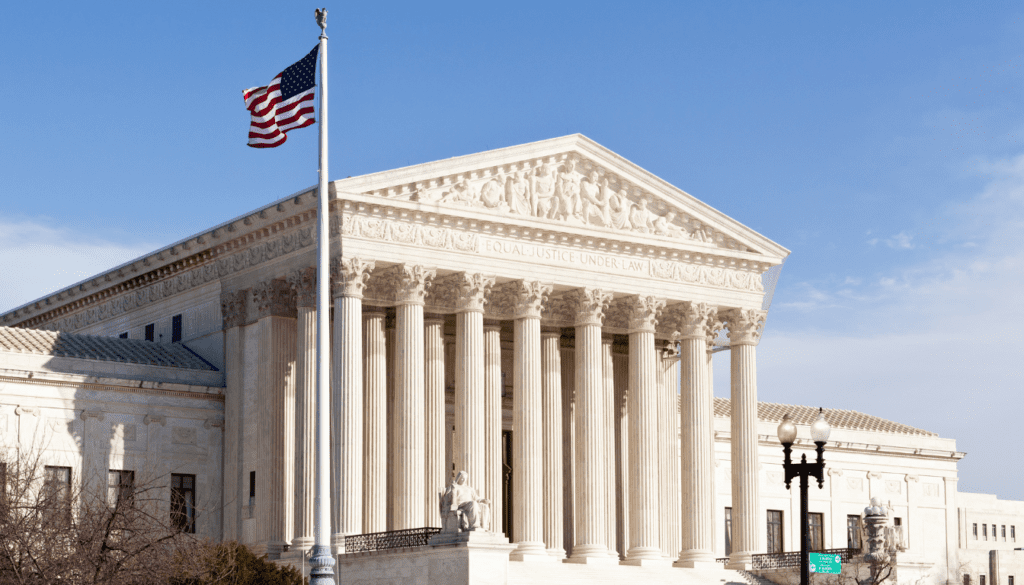
The John F. Kennedy Center for the Performing Arts is in Washington, D.C. Along the serene Potomac River, it stands as a tribute to the 35th President of the U.S. It’s a place where people enjoy various cultural performances, from classical music to theater.
In 1962, President Kennedy started a fundraising campaign for what he called a “National Cultural Center.” Congress then gave $23 million for it. By 1963, it was renamed the John F. Kennedy Center for the Performing Arts. It officially opened on September 8, 1971, after $70 million was spent to build it.
The Kennedy Center has seen many famous performances start here, like the first American show of Les Misérables. It’s made a name for itself by its original performances. It’s also where the National Symphony Orchestra plays, making it a key place for culture.
Besides hosting shows, the Kennedy Center also focuses on teaching the arts. It reaches out to millions of young Americans. Leaders like James D. Wolfensohn and Lawrence J. Wilker have worked to make the arts open to everyone.
Today, the Kennedy Center is a symbol of how art can touch and bring people together. If you love the arts or just want to see something new, this place is a top choice in Washington, D.C. Overlooking the Potomac River, it’s an experience that will stay with you.
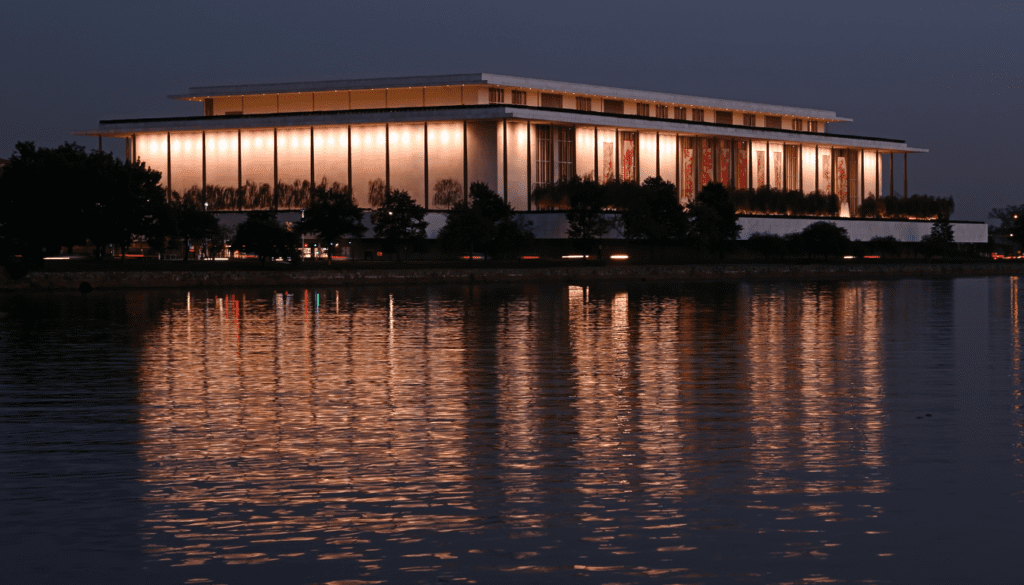
| Venue | Capacity |
|---|---|
| Concert Hall | 2,465 |
| Eisenhower Theater | 1,161 |
| Family Theater | 320 |
| Jazz Club | 160 |
| Millennium Stage | 235 |
| Opera House | 2,347 |
| Terrace Theater | 490 |
| Theater Lab | 398 |
The John F. Kennedy Center for the Performing Arts is special among Washington, D.C.’s cultural sites. It offers a mix of architecture, performances, and educational events. For anyone interested in the arts, it’s a key place to visit in the nation’s capital.
Conclusion
Reflecting on my journey through Washington D.C.’s landmarks fills me with awe. The city showcases deep history and importance. The Washington Monument and the National Mall memorials capture America’s story beautifully.
Are you into history or want to explore the U.S.’s culture? Head to Washington D.C. It’s full of unforgettable spots. The White House and U.S. Capitol Building show American democracy and our founding.
Leaving fills me with a new love for Washington D.C.’s history. It’s a place of American spirit and strength. I’m thankful for this chance to see its amazing landmarks and learn its rich history.
FAQ
What are some of the most famous historical landmarks in Washington D.C.?
Washington D.C. boasts many famous landmarks. These include the iconic White House and the United States Capitol. It also has the National Mall with its monuments and memorials, Smithsonian museums, Library of Congress, and Arlington National Cemetery.
Can I take a tour of the White House?
Yes, you can take a tour of the historical White House. It lets you learn about its history and importance. You can see the grand state rooms and how the presidency works.
What can I see at the United States Capitol building?
At the United States Capitol, you can take a guided tour. It shows you the building’s past and design. You will learn about its role in the country’s governance and see where important events happened.
What are the must-see monuments and memorials on the National Mall?
The National Mall features key monuments and memorials. The Lincoln Memorial, Vietnam Veterans Memorial, and Martin Luther King Jr. Memorial are must-sees. They offer deep and touching experiences to all visitors.
What are some lesser-known historical landmarks in Washington D.C.?
Besides the famous spots, D.C. has many hidden historical gems. The Heurich House, Old Stone House, and Tudor Place are some. They showcase lesser-known yet crucial parts of the city’s history and architecture.
What can I see at the Smithsonian museums in Washington D.C.?
The Smithsonian is a treasure trove for visitors. The National Air and Space Museum highlights air and space progress. The American History Museum offers insights into the nation’s people, events, and artifacts.
Can I visit the Supreme Court of the United States?
Indeed, you can tour the Supreme Court’s neoclassical building. This highest court in the U.S. reveals its paramount role in the nation’s legal system. You’ll gain insights into its duty to the Constitution.
What can I do at the John F. Kennedy Center for the Performing Arts?
The Kennedy Center is a cultural hub with a variety of performances. It hosts everything from classical music and ballet to theater and opera. For those who love the arts, it’s essential visiting in Washington D.C.





















